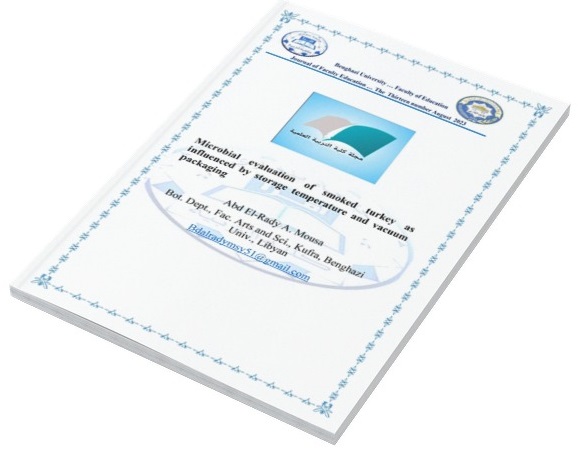Microbial evaluation of smoked turkey as influenced by storage temperature and vacuum packaging
DOI:
https://doi.org/10.37376/fesj.vi13.3924Keywords:
Smoked turkey, microbiological analysis, storage, bacteria, lactic acid bacteriaAbstract
The development of microbial association of vacuum-packed smoked turkey during storage at 0, 5, 10 and 15 ºC for up to 30, 20,10 and 5 days, respectively was examined. Total viable count (TVC), lactic acid bacteria (LAB), yeasts and moulds (Y&M), Pseudomonads, total staphylococci, members of the Enterobactericeae group, Escherichia coli, and the pathogenic bacteria Listeria spp. and Salmonella spp. were enumerated.
The population of lactic acid bacteria (LAB), Staphylococci, Pseudomonades, Enterobacteriaceae and yeast/moulds was low (below 102 CFU/g), while no pathogenic bacteria e.g., Listeria and salmonella was detected by enrichment technique.
Temperature and sampling time were significantly influenced on TVC and LAB counts. At the end of storage, the microbial association in smoked turkey was dominated by lactic acid bacteria regardless of the storage temperature.
The Gram-negative flora (e.g., Enterobacteriaceae and pseudomonads) was not found to increase in numbers while staphylococci and yeasts/moulds remained at low level (< 2 log CFU/g) in smoked turkey regardless of the packing conditions. The pH value of smoked turkey was 6.72 to 6.75 in the beginning of storage, and the values of pH reached to 5.72 to 6.45 at the end of storage at 15 and 0 ºC respectively. It could be concluded, on the basis of the results that, the vacuum packaging of smoked turkey and chilling temperature conditions (0 and 5 ºC) were effective methods for the preservation and safety of this product for extending the shelf life.
Downloads

Downloads
Published
How to Cite
Issue
Section
License
Copyright (c) 2023 Faculty of Education Scientific Journal

This work is licensed under a Creative Commons Attribution-NonCommercial-NoDerivatives 4.0 International License.














